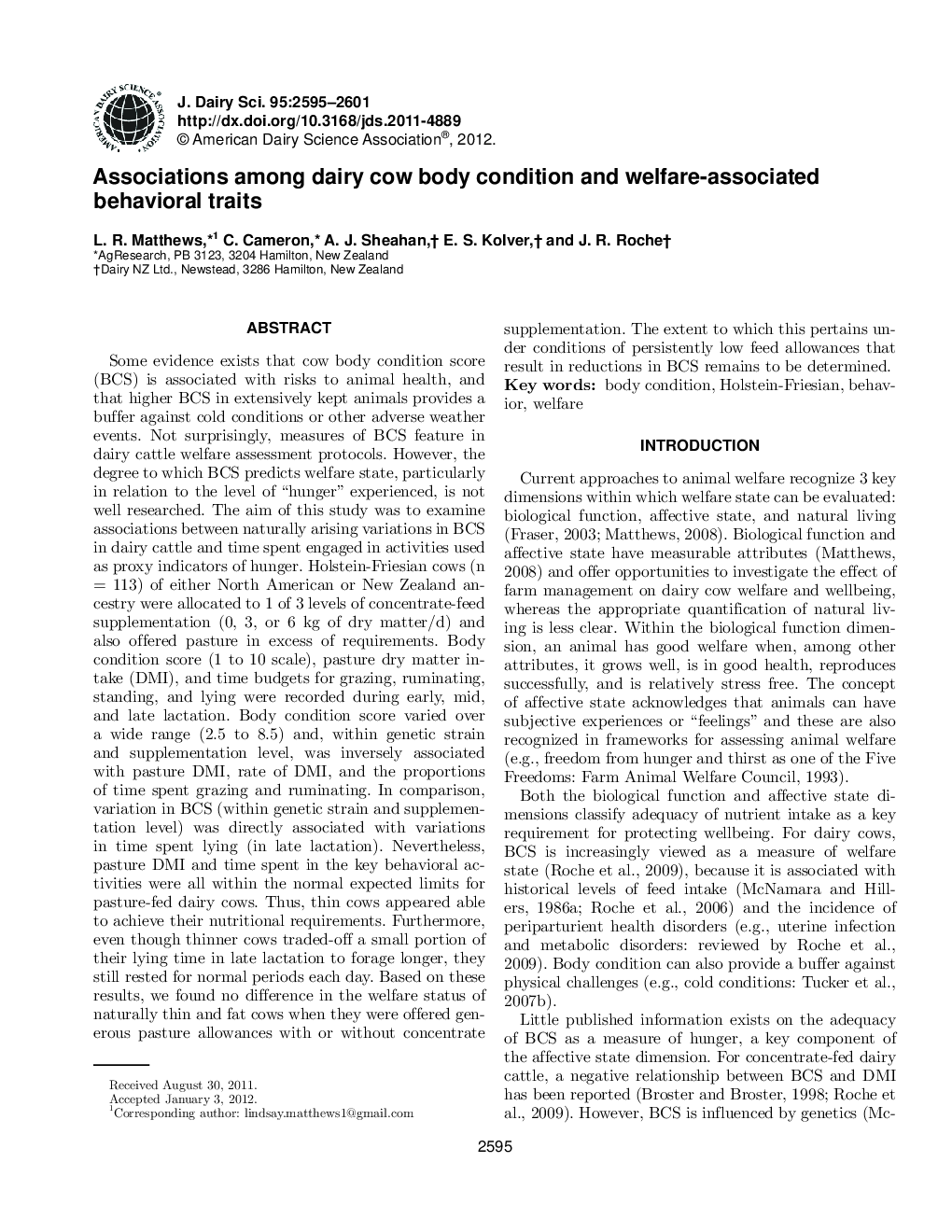| Article ID | Journal | Published Year | Pages | File Type |
|---|---|---|---|---|
| 10980254 | Journal of Dairy Science | 2012 | 7 Pages |
Abstract
Some evidence exists that cow body condition score (BCS) is associated with risks to animal health, and that higher BCS in extensively kept animals provides a buffer against cold conditions or other adverse weather events. Not surprisingly, measures of BCS feature in dairy cattle welfare assessment protocols. However, the degree to which BCS predicts welfare state, particularly in relation to the level of “hunger” experienced, is not well researched. The aim of this study was to examine associations between naturally arising variations in BCS in dairy cattle and time spent engaged in activities used as proxy indicators of hunger. Holstein-Friesian cows (n = 113) of either North American or New Zealand ancestry were allocated to 1 of 3 levels of concentrate-feed supplementation (0, 3, or 6 kg of dry matter/d) and also offered pasture in excess of requirements. Body condition score (1 to 10 scale), pasture dry matter intake (DMI), and time budgets for grazing, ruminating, standing, and lying were recorded during early, mid, and late lactation. Body condition score varied over a wide range (2.5 to 8.5) and, within genetic strain and supplementation level, was inversely associated with pasture DMI, rate of DMI, and the proportions of time spent grazing and ruminating. In comparison, variation in BCS (within genetic strain and supplementation level) was directly associated with variations in time spent lying (in late lactation). Nevertheless, pasture DMI and time spent in the key behavioral activities were all within the normal expected limits for pasture-fed dairy cows. Thus, thin cows appeared able to achieve their nutritional requirements. Furthermore, even though thinner cows traded-off a small portion of their lying time in late lactation to forage longer, they still rested for normal periods each day. Based on these results, we found no difference in the welfare status of naturally thin and fat cows when they were offered generous pasture allowances with or without concentrate supplementation. The extent to which this pertains under conditions of persistently low feed allowances that result in reductions in BCS remains to be determined.
Related Topics
Life Sciences
Agricultural and Biological Sciences
Animal Science and Zoology
Authors
L.R. Matthews, C. Cameron, A.J. Sheahan, E.S. Kolver, J.R. Roche,
